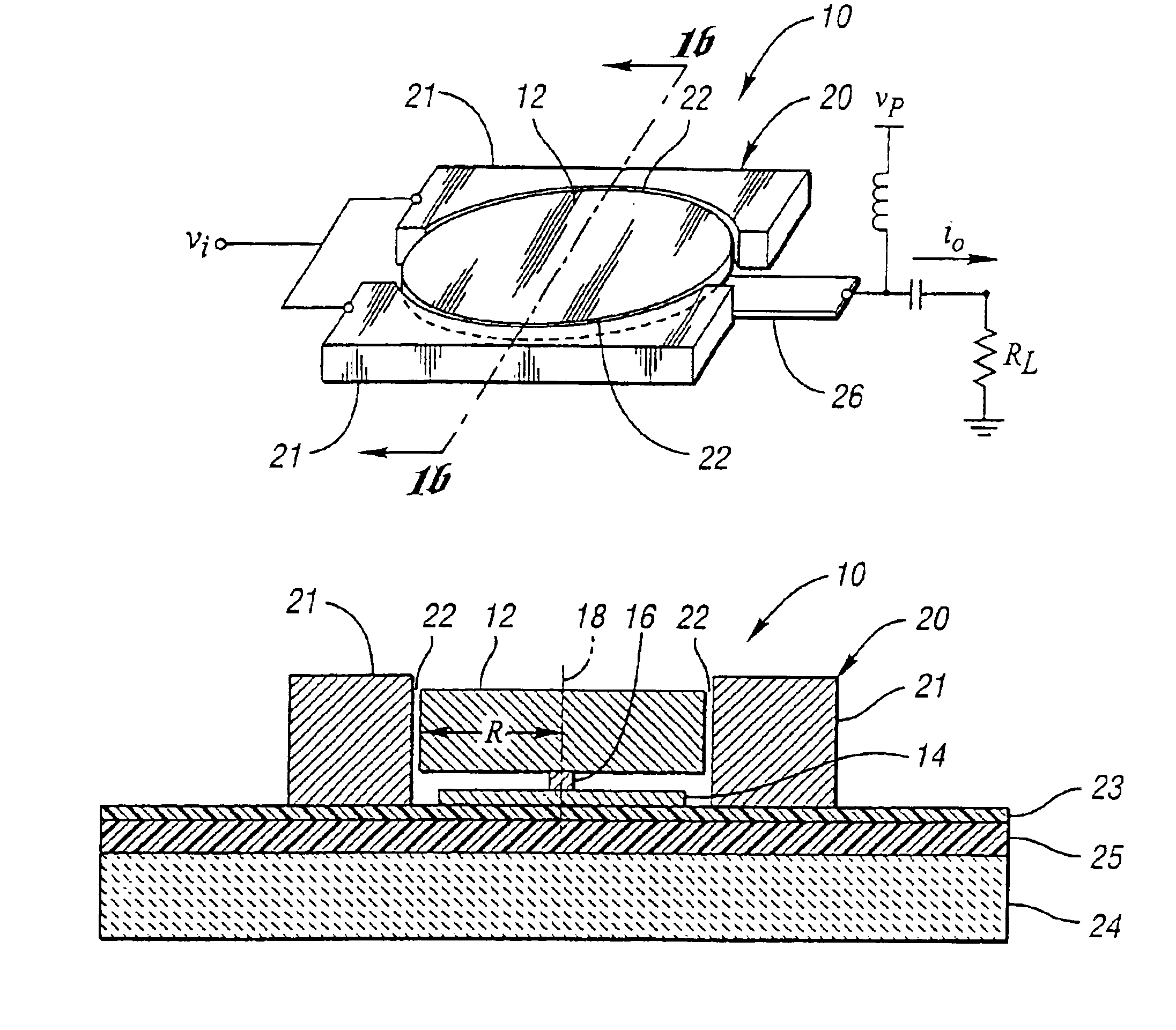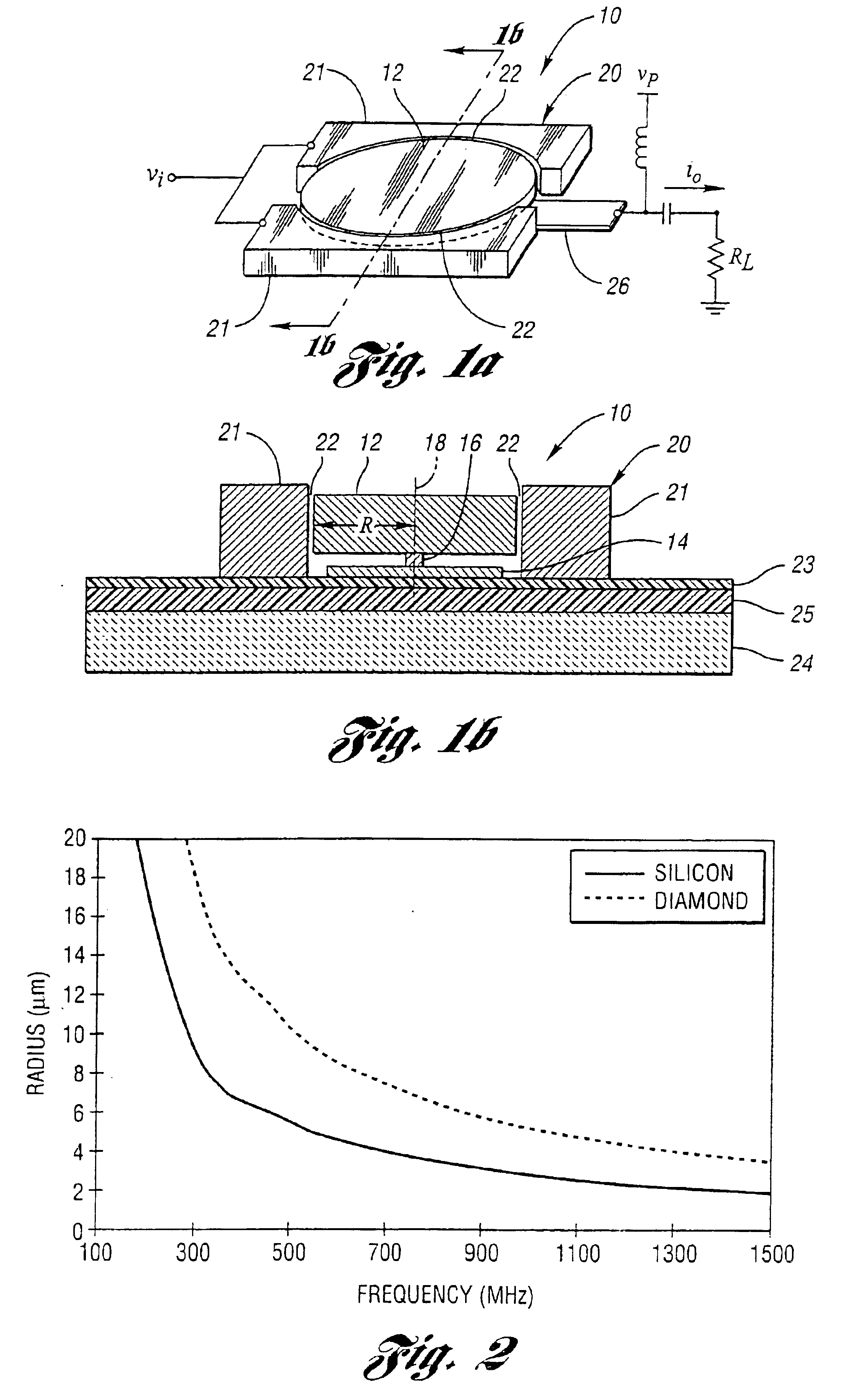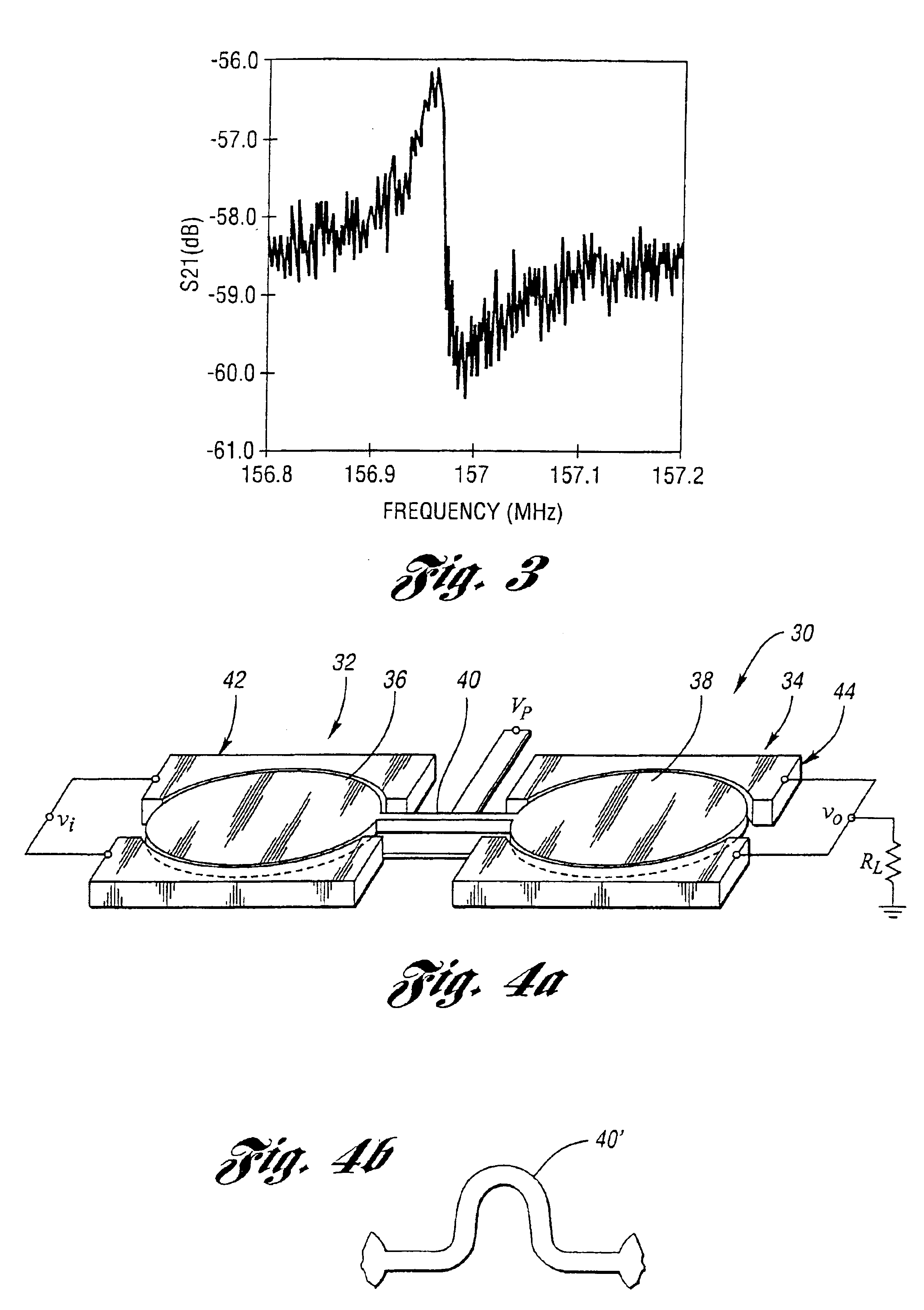Micromechanical resonator device and micromechanical device utilizing same
a micromechanical and resonator technology, applied in relays, generators/motors, snap-action arrangements, etc., can solve the problems of consuming a sizable portion of the total sub-system area, devices posing an important bottleneck against the ultimate miniaturization and portability of wireless transceivers, and reducing power handling capacity, so as to improve power handling capacity, improve q, and improve the effect of siz
- Summary
- Abstract
- Description
- Claims
- Application Information
AI Technical Summary
Benefits of technology
Problems solved by technology
Method used
Image
Examples
Embodiment Construction
FIGS. 1a and 1b present a preferred embodiment of a micromechanical resonator device of the present invention, generally indicated at 10. In FIG. 1a, the perspective view shows the major features of the preferred embodiment. The resonator device 10 includes a disk 12 supported above a ground plane 14 and supported by a single anchor post 16 at its center 18. A drive electrode structure, generally indicated at 20, surrounds the perimeter of the disk 12, separated by a narrow air gap 22. The electrode structure 20 is split in half to form two input electrodes 21 in order to allow routing to the ground plane 14 and maintain symmetry. In this configuration, the resonator disk 12 is designed to move in a purely radial mode, expanding and contracting along its radius at resonance ideally with no motion perpendicular to a substrate 24 having isolation and passivation layers 23 and 25 or rotation around the anchor point or center 18. In this mode, the center 18 of the disk 12 is a nodal poi...
PUM
 Login to View More
Login to View More Abstract
Description
Claims
Application Information
 Login to View More
Login to View More - R&D
- Intellectual Property
- Life Sciences
- Materials
- Tech Scout
- Unparalleled Data Quality
- Higher Quality Content
- 60% Fewer Hallucinations
Browse by: Latest US Patents, China's latest patents, Technical Efficacy Thesaurus, Application Domain, Technology Topic, Popular Technical Reports.
© 2025 PatSnap. All rights reserved.Legal|Privacy policy|Modern Slavery Act Transparency Statement|Sitemap|About US| Contact US: help@patsnap.com



